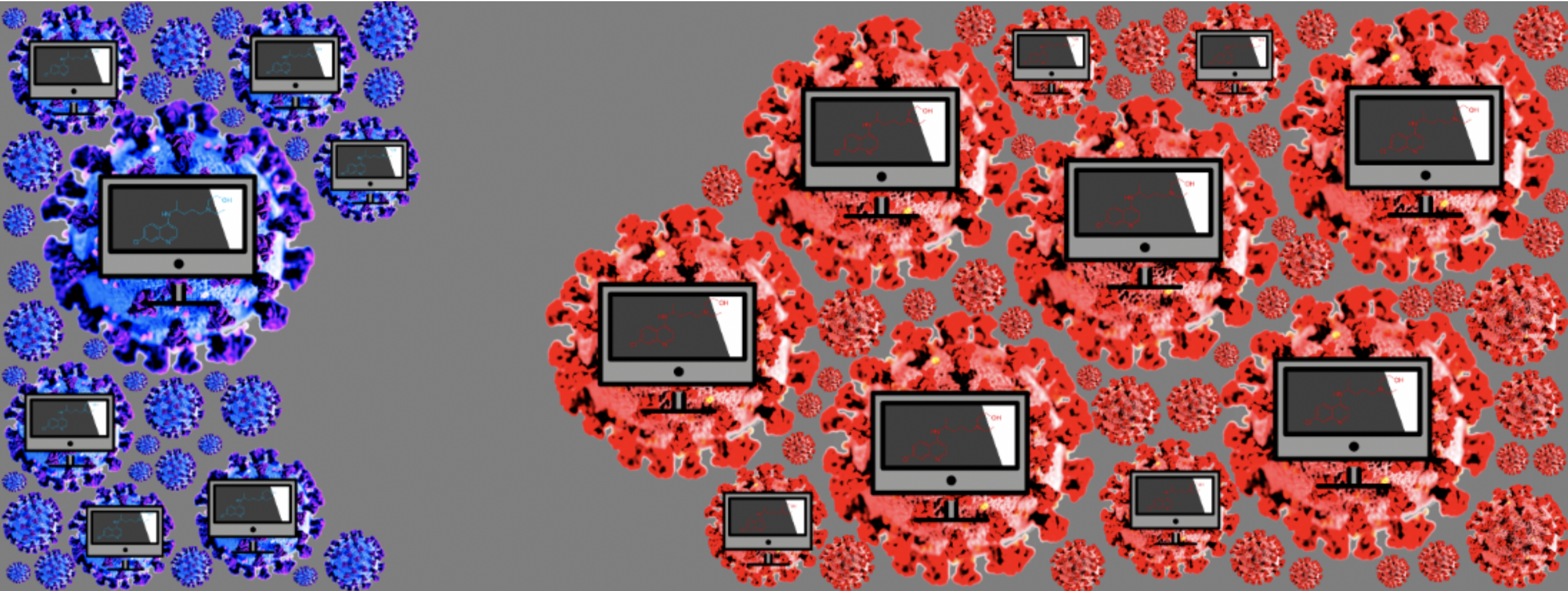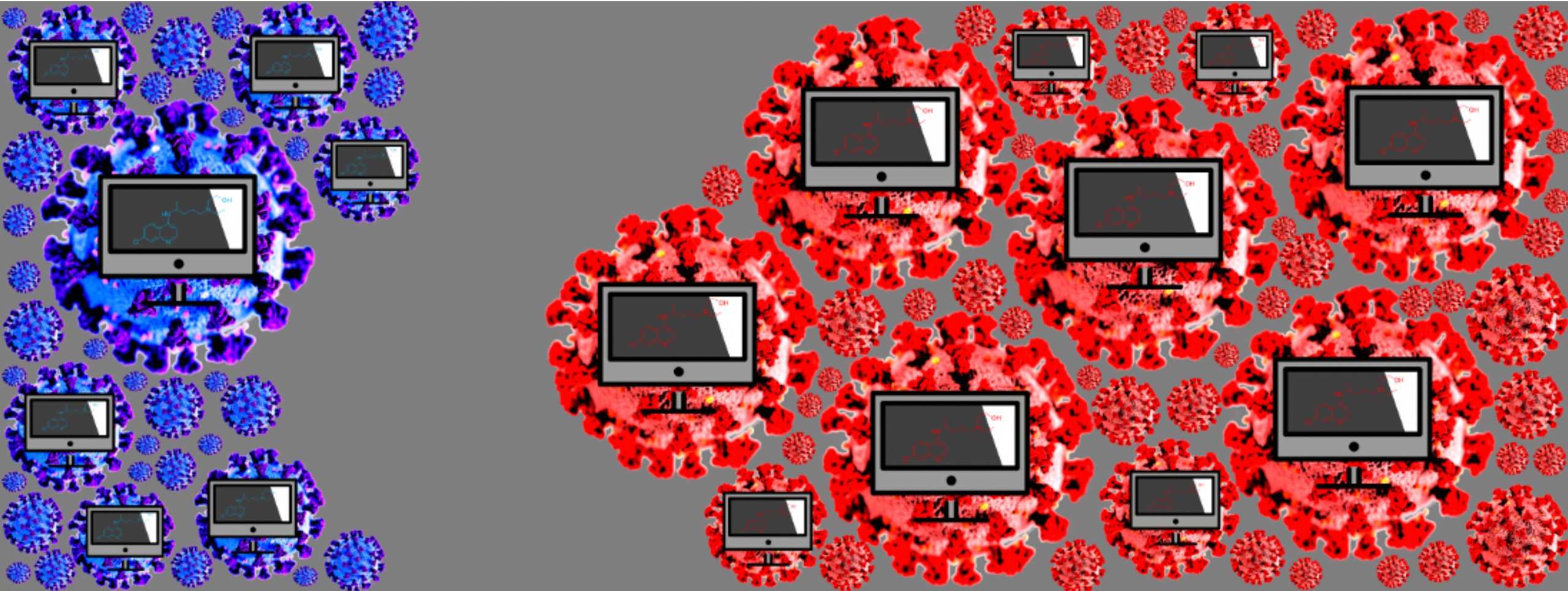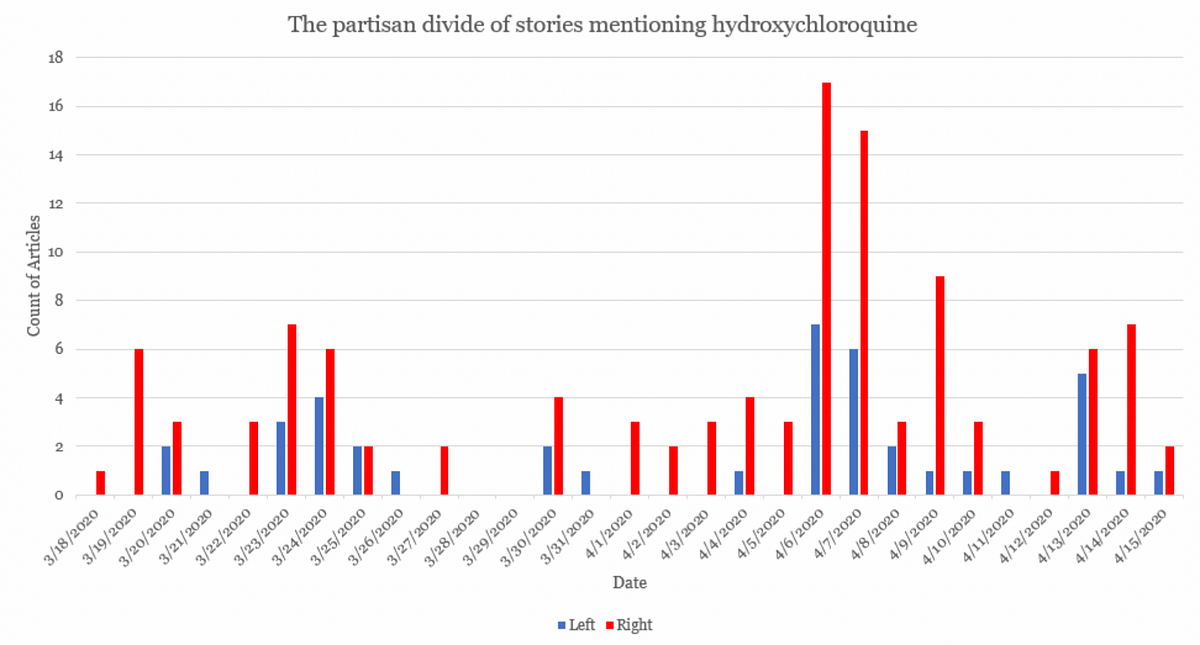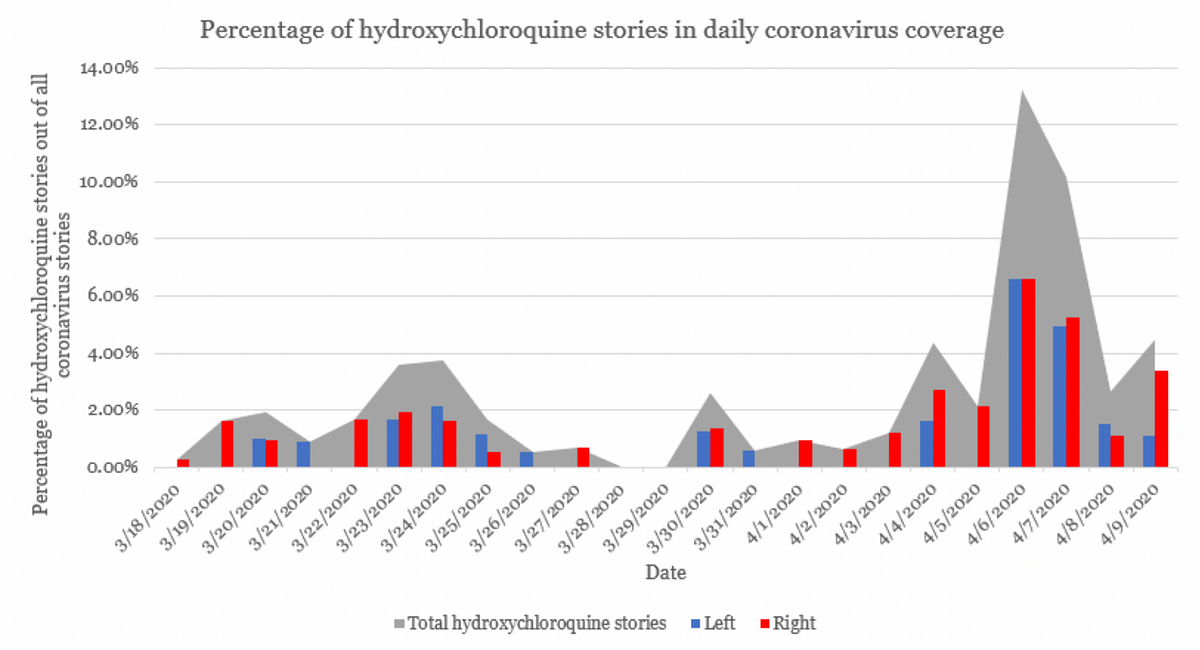Partisan divisions frame hydroxychloroquine coverage in the U.S.
Daily coverage of the drug shared
Partisan divisions frame hydroxychloroquine coverage in the U.S.

Daily coverage of the drug shared 11 times more often by right-wing media consumers than ones on the left

Right-wing outlets have covered the drug hydroxychloroquine, touted by President Trump as a COVID-19 cure, significantly more often than left-wing outlets, forging a partisan divide which mirrors the politicized focus on the drug in parts of the US government and feeding into existing confusion about potential coronavirus cures.
While there are not yet any proven remedies to COVID-19, misinformation about possible cures has proliferated as the pandemic continues. President Trump and Trump appointees have continued to promote hydroxychloroquine as a potential panacea, despite murkiness about the drug’s efficacy in treating the new coronavirus. Scientists and public health experts — including National Institutes of Health expert Dr. Anthony Fauci — say that clinical trials are necessary to make robust conclusions about the drug’s efficacy. While anecdotal evidence and limited trials in France and China point to possible success in treating COVID-19 patients, others have been inconclusive. Meanwhile, a recent study in Brazil ended early due to safety issues, as some patients in the study experienced dangerous heart problems.
Disproportionate focus on hydroxychloroquine over other possible coronavirus cures has impacted the search for a remedy: after a March 21 tweet by President Trump praising hydroxychloroquine, the proportion of COVID-19 drug trials studying hydroxychloroquine for coronavirus ballooned from one in 10 to one in three.
A DFRLab analysis of over 9,500 coronavirus-related articles published by 22 left-wing and right-wing news outlets since March 18, 2020 uncovered partisan differences in both coverage and engagement of hydroxychloroquine articles. The analysis was done using data from BuzzSumo, a media monitoring tool. March 18 marked the first mention of hydroxychloroquine or chloroquine in the 22 news outlets. The partisan status of media outlets was determined using AllSides’ media bias chart.

Among this sample of partisan outlets, right-wing outlets shared more hydroxychloroquine stories than left-wing outlets, both in raw numbers and as a percentage of daily coronavirus coverage. Notably, almost every day from April 1 to April 15 there were more stories mentioning hydroxychloroquine in right-wing outlets than in left-wing ones.

Interestingly, President Trump’s March 21 tweet praising hydroxychloroquine and azithromycin as potential “game changers in the history of medicine” did not seem to impact right-wing coverage on that day. While this could indicate that right-wing outlets’ coverage of hydroxychloroquine is not simply a result of more closely covering what Trump says, right-wing outlets in the sample set did have more coverage of hydroxychloroquine than left-wing outlets after White house news briefings on March 19 and April 3–5, when Trump mentioned the drug. On three of those four dates, there was no left-wing coverage at all.
To account for the possibility that right-wing outlets may have published more hydroxychloroquine articles simply because they cover all coronavirus phenomenon more often, the DFRLab also calculated the percentage of daily coronavirus coverage that mentions hydroxychloroquine. From March 18 to April 9, 1.45 percent of COVID-19 articles in the right-wing ecosystem mentioned either hydroxychloroquine or chloroquine, in comparison to 1.00 percent of COVID19 articles in left-leaning outlets. The amount of coverage varied significantly by day, with April 6 bringing in far more hydroxychloroquine content on both sides of the political spectrum than any other day. A daily median of 1.11 percent of coronavirus coverage in right-wing outlets mentioned hydroxychloroquine, compared to a daily median of 0.56 in left-wing outlets.

Engagement on hydroxychloroquine articles — defined in BuzzSumo as total shares on Facebook, Twitter, Pinterest, and Reddit — also had a significant partisan slant.
Median engagement on hydroxychloroquine stories per day was much higher in right-wing outlets. There was a median of 56,450 shares of daily coverage of the drug in right-wing outlets from March 18 to April 15, compared to 5,077 shares on the left. In other words, daily coverage of the drug was shared 11 times more from right-wing outlets than from left-wing outlets.
While these differences in coverage and engagement may seem slight, this partisan divide helps illustrate that hydroxychloroquine has saturated right-wing readers in a way that has not occurred on the left. The focus on hydroxychloroquine on the right threatens to feed into existing alt-right conspiracies about the drug and the media. Some conspiracists active in the QAnon community have stated that the media battle over hydroxychloroquine is “the public battle between an actual cure [of hydroxychloroquine] and the usual Deep State-imposed vaccine.” One fringe website claimed that the divide in hydroxychloroquine coverage was proof that Democrats and left-wing outlets were “enemies of the state” because “The Left-wing media is now working overtime, hand-in-hand with their Democrat masters, to kill more Americans by proclaiming that a drug which could help them survive is too ‘controversial’ to use.”
In addition to conspiracies, the partisan divisions in coverage also help create separate media bubbles. An analysis by the Columbia Journalism Review found that right-wing media has covered coronavirus differently by focusing more on COVID-19 denial, praise of Trump, and denouncement of Democrats. Polarized right and left-wing media bubbles separate Americans from a shared set of facts — facts that are imperative to have in common, since fighting COVID-19 requires collective action like social distancing and the proper scientific testing of potential cures.
Alyssa Kann is a Research Assistant with the Digital Forensic Research Lab.

